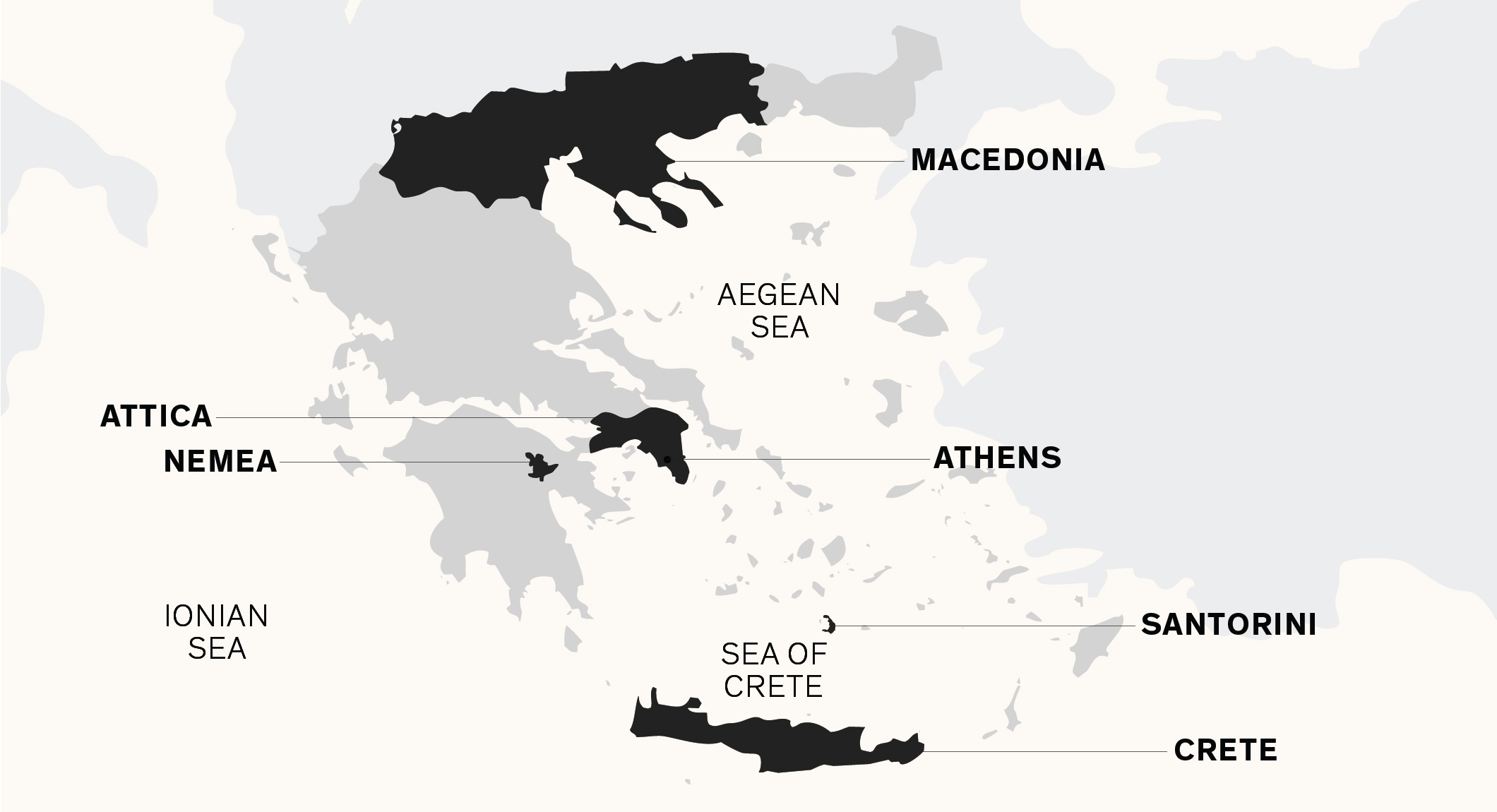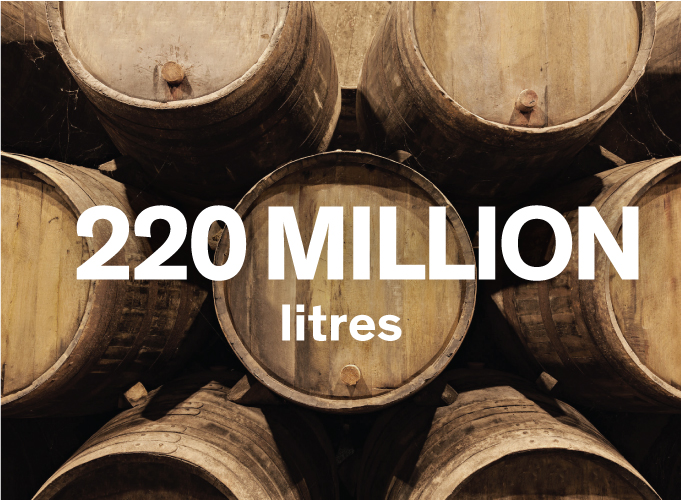
PDO, PGI and Varietal Wines from Greece – A Fascinating Journey of Discovery
Greece emerged in the late-20th century as a serious player in the wine world. It hasn't looked back since; unique grape varieties and inimitable flavours are seducing oenophiles from London to Hong Kong. Greek wines continue to receive critical acclaim in competitions, as new and experimental styles emerge, and the focus on sustainable viticulture grows. At the same time, Greek producers never forget their roots – this proud nation gave birth to Europe's first definitive wine culture.
Today, wine remains one of the most important parts of the Greek economy, increasingly driven by exports and international sales. And with good reason; the best Greek wines, nearly always produced from indigenous grapes, have few peers. Indeed, the country boasts 33 appellations or Protected Designations of Origin (PDO), and 114 Protected Geographical Indications (PGI), as well as the newly introduced Varietal Wines category.
Wines to Try
Start discovering our collection of exciting Greek wines with this curated list.
Regions to Know
From volcanic islands to vineyards surrounded by mountains, Greece’s key wine regions have traditions dating back thousands of years, combined with an enthusiasm for experimenting with new grape varieties.


Santorini (Aegean Islands)
Mythical, beautiful Santorini is among the oldest wine regions in this ancient country. White wines dominate here, especially Assyrtiko, which makes up more than half of the volcanic island’s production. Grapes are grown using the kouloura system, where the vine is pruned into a unique “basket” shape and kept low to the ground in a coiled wreath formation that protects it from the island’s intense summer sun and near-constant winds.

Macedonia
Grape growing in the northern reaches of Greece has been going on for centuries. Indigenous grapes like Xinomavro and Assyrtiko are widely planted, along with international varieties, including Cabernet Sauvignon and Syrah. This large region borders Albania and Bulgaria, and features a variety of climates and landscapes, allowing it to produce many different styles of wines.

Attica
The vineyards of Attica in central Greece surround the country’s capital, Athens, and according to ancient Greek mythology, this is where the gods taught man to make wine. With over 16,000 acres of planted grapes, this is also Greece’s largest wine-growing region. Savatiano, a native grape used for Retsina production, is the area’s most widely planted, along with Roditis and Athiri.

Crete
Minoans started grape production on the island of Crete some 4,000 years ago. The island’s hot Mediterranean climate means most vineyards are planted 200 metres above sea level. The red blending grape Kotsifali and the white Vilana are the most commonly grown varieties, but modern winemakers are also having success with international grapes like Cabernet Sauvignon, Merlot and Sauvignon Blanc.

Nemea
Located in the northeast corner of the Peloponnese, Nemea is an important producer of deep, dark red wines, especially from the Agiorgitiko grape. The region, with its lush valleys and surrounding mountains, features a milder climate than much of the rest of the country, and for that reason, as well as its landscape, it is often compared to northern California.
Fast Facts

The Greeks have been making wine for 6,500 years.

Greece ranks ninth in the European Union for wine production.

The country produced 220 million litres of wine in 2018.
Greece’s Key Varietals

Robola
Synonymous with the Ionian island of Cephalonia, where the limestone soil imparts a distinct minerality to the wine, this white-skinned grape produces elegant bottles with a light to medium body and great aging potential. These wines boast a high acidity with notes of stone fruit, fresh herbs and refreshing lemon.
TRY IT WITH: Grilled seafood salad or roast pork

Malagousia
Almost completely extinct by the mid-20th century, the grape regained status in the 1980s thanks to a handful of visionary Greek winemakers who saw its potential. A lovely light- to medium-bodied wine that works equally well on its own or as part of a blend, it’s now grown and loved throughout Greece and has nuances of peach, melon, herbs and floral notes.
TRY IT WITH: Rosemary-crusted chicken and potatoes

Assyrtiko
Indigenous to the island of Santorini, where the vines are up to 250 years old and are trained to grow low against the ground in a unique “basket” shape, this varietal is now produced throughout Greece. You’ll discover aromas and flavours of lemon, lime, grapefruit and melon, all wrapped up in a medium body with crisp acidity.
TRY IT WITH: Chilled crab and lobster, or a ripe tomato and feta salad drizzled with good olive oil

Xinomavro
Indigenous to Greece, the grape is most closely associated with the Naoussa region but is planted throughout the north of the country. Full-bodied and intense, with good acidity and notes of cherry, plum, spice and rich oak, it has a similar taste to the Italian Nebbiolo grape.
TRY IT WITH: Mushroom risotto, grilled steak, lamb chops or moussaka

Agiorgitiko
Most extensively planted in Nemea and the Peloponnese, Agiorgitiko is gaining fans around the world. The grape is capable of producing a wide variety of wine styles, depending on the region. You’ll experience raspberry, blackberry, plum, black pepper and sweet spices like cinnamon and nutmeg.
TRY IT WITH: Rack of lamb, prime rib, beef stew or grilled vegetables with crumbled feta

Limnio
Greeks have been making wine from the Limnio grape since the times of Homer. Hardy and late-ripening, it produces a delicate, medium-bodied wine that is frequently blended alongside grapes like Grenache, Merlot, Cabernet Sauvignon and Xinomavro. You’ll discover a unique bay leaf aroma, plus fresh herbs and red berry notes.
TRY IT WITH: Pasta pomodoro, roast pork or salmon
